Larking about by the Thames; Meditating on Beauty, and Elderflower & Lemon cordial recipe
Stepping back through centuries of London life and death
Larking about in the mud of the River Thames in and around the City of London before it spreads out into the estuary is surprisingly meditative. Your attention is purposeful, just a few feet in front of you, fixed on the ground. At first glance, there is little unusual to notice, but give your eyes time to relax and then focus.
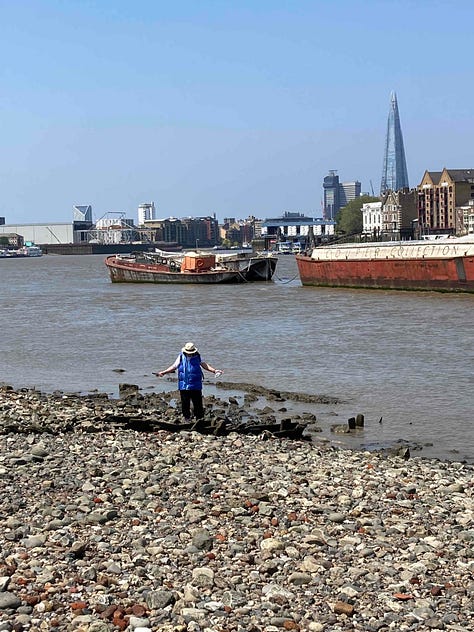

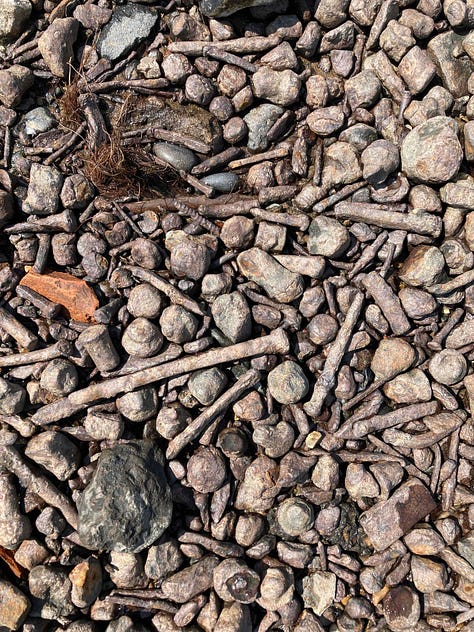
Your mind clears. It's just you, crouching, looking at the hundreds of years of history written in the sand, detritus mud and pebbles of the river. It has flowed through the landscape for thousands of years and is the backdrop to millions of lives, Londoners and visitors.
Fellow food writer Jenny Ridgwell kindly agreed to take me on a hunt earlier this summer. I had been intrigued by her stories and images shared on Instagram. Armed with permits and permission from the London Port Authority, we met on a river beach in Rotherhithe, southeast London.
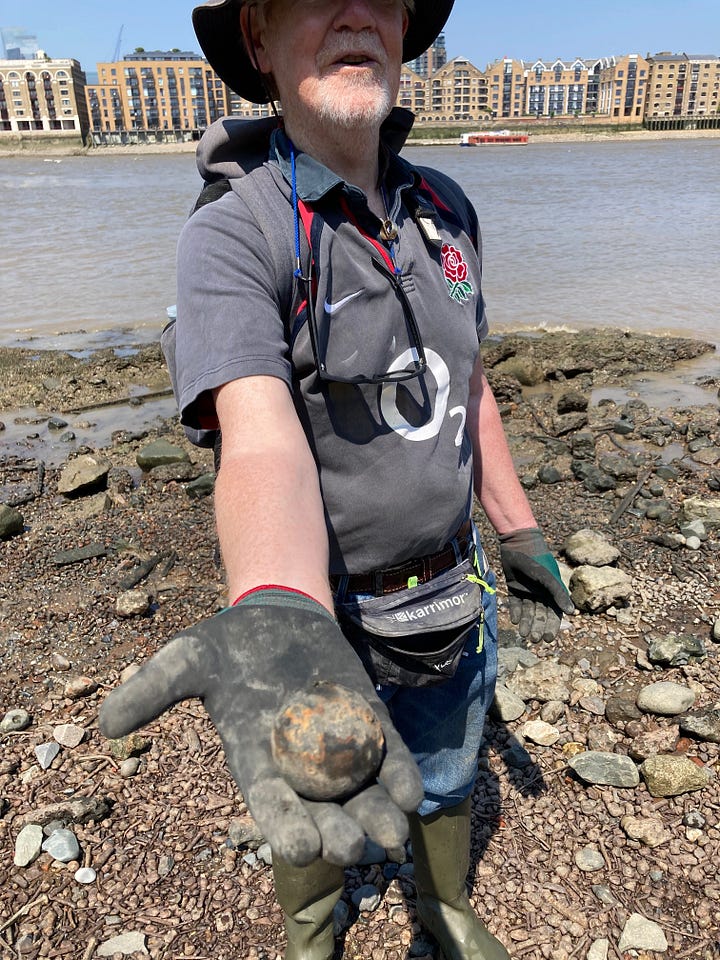
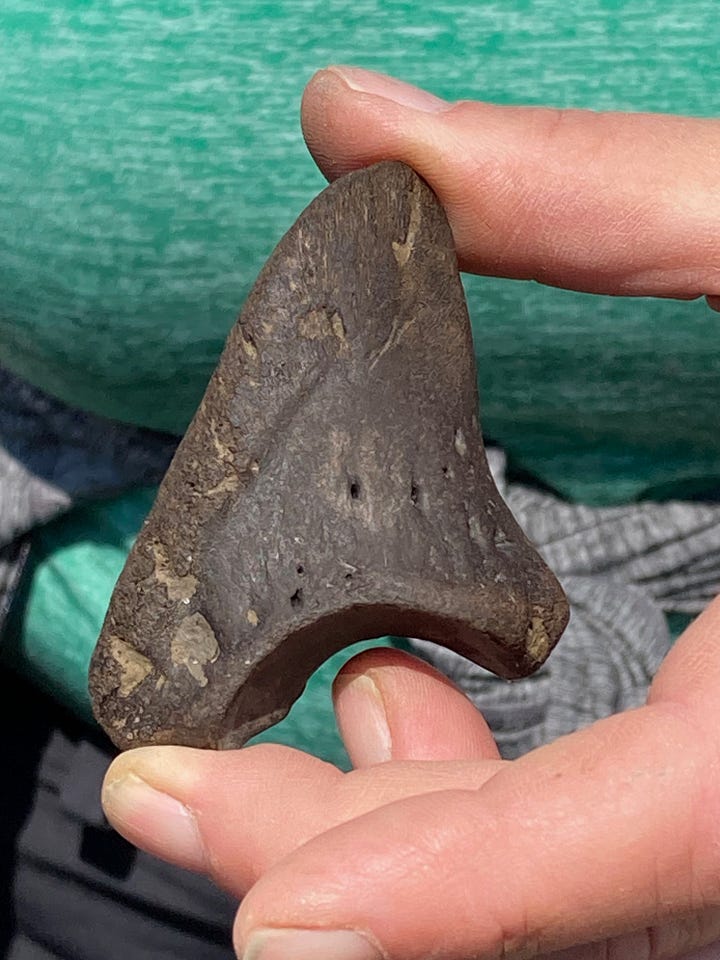
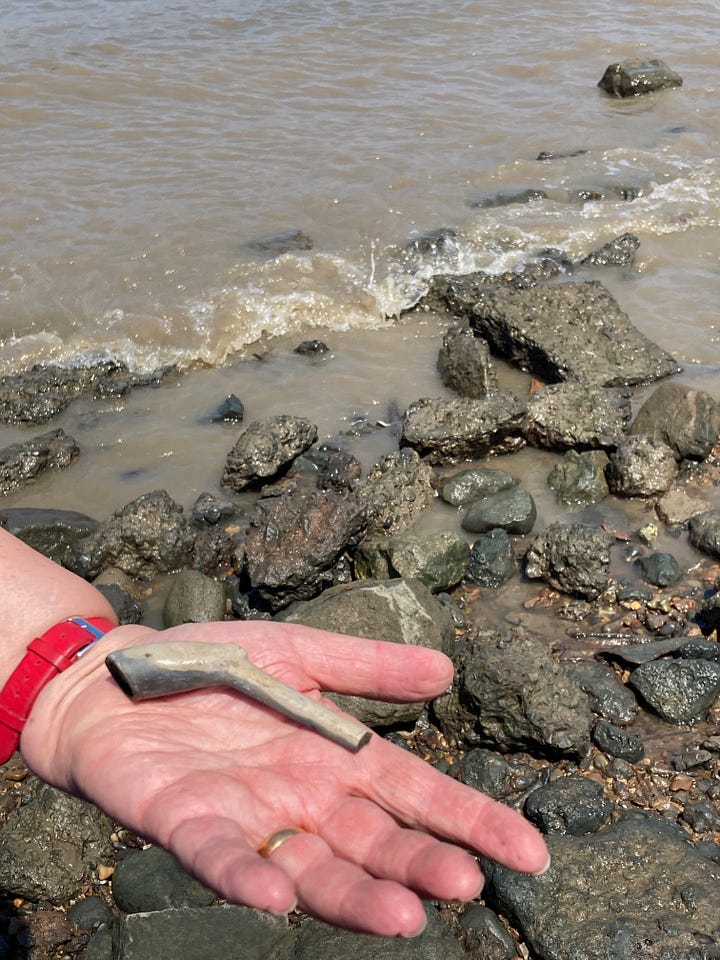
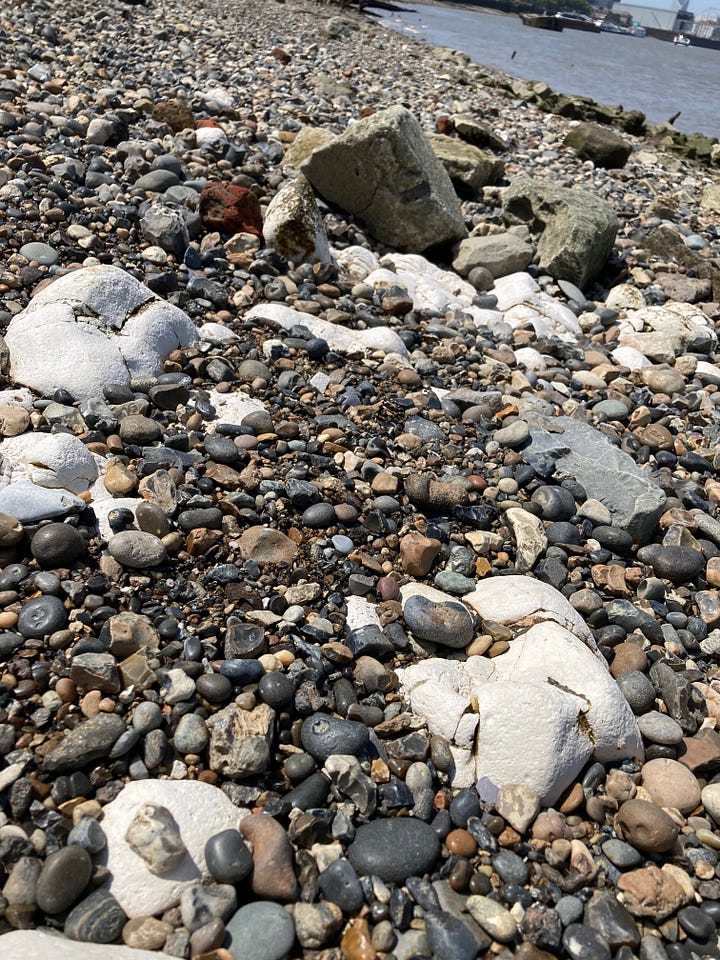
Jenny's finds give a glimpse into many different people's lives, including domed glass end pieces for torpedo bottles (early carbonated drinks containers from the mid-1800s), clay pipes, cracked pottery, oyster shells, terracotta fragments and smoothed fragments of glass, and too many discarded vapes.
During our mudlarking hours, the river gave up thousands of nails from wooden cargo ships scrapped in the 1800s. The nails wash up on the so-called Metal Line, an area of the river bank where tide and time gather similar forms. We found tens of tiny pins made of copper. These were used to pin clothes together for hundreds of years, millions of which ended up in household rubbish and then dumped into the river.
Fellow mudlarks tend to avoid conversation while they are seeking. Still, one experienced larker was happy to share his discovery, a canon ball weighing just under 8kg (see photo).
We found several animal bones, likely sheep and cattle. Further upstream, in the shadow of the South Bank's OXO tower, you'll find thousands of cattle bones from when the place was used to make beef stock.
The 'Citrus' link
You might even find a post-Medieval Spork (a combined fork and spoon), described here by the Museum of London as: 'The fork end of this post-medieval cutlery was designed to spear sticky suckets. Sucket, from the French word 'succade' (juicy), was applied to fruits or citrus rind preserved in sugar syrup. The fruit could be speared with the fork while the small spoon was used for supping up the flavoursome liquid. Combined forks and spoons were used in England in the early medieval period, but most surviving examples, like this one in silver, date from the mid-17th century onwards’.
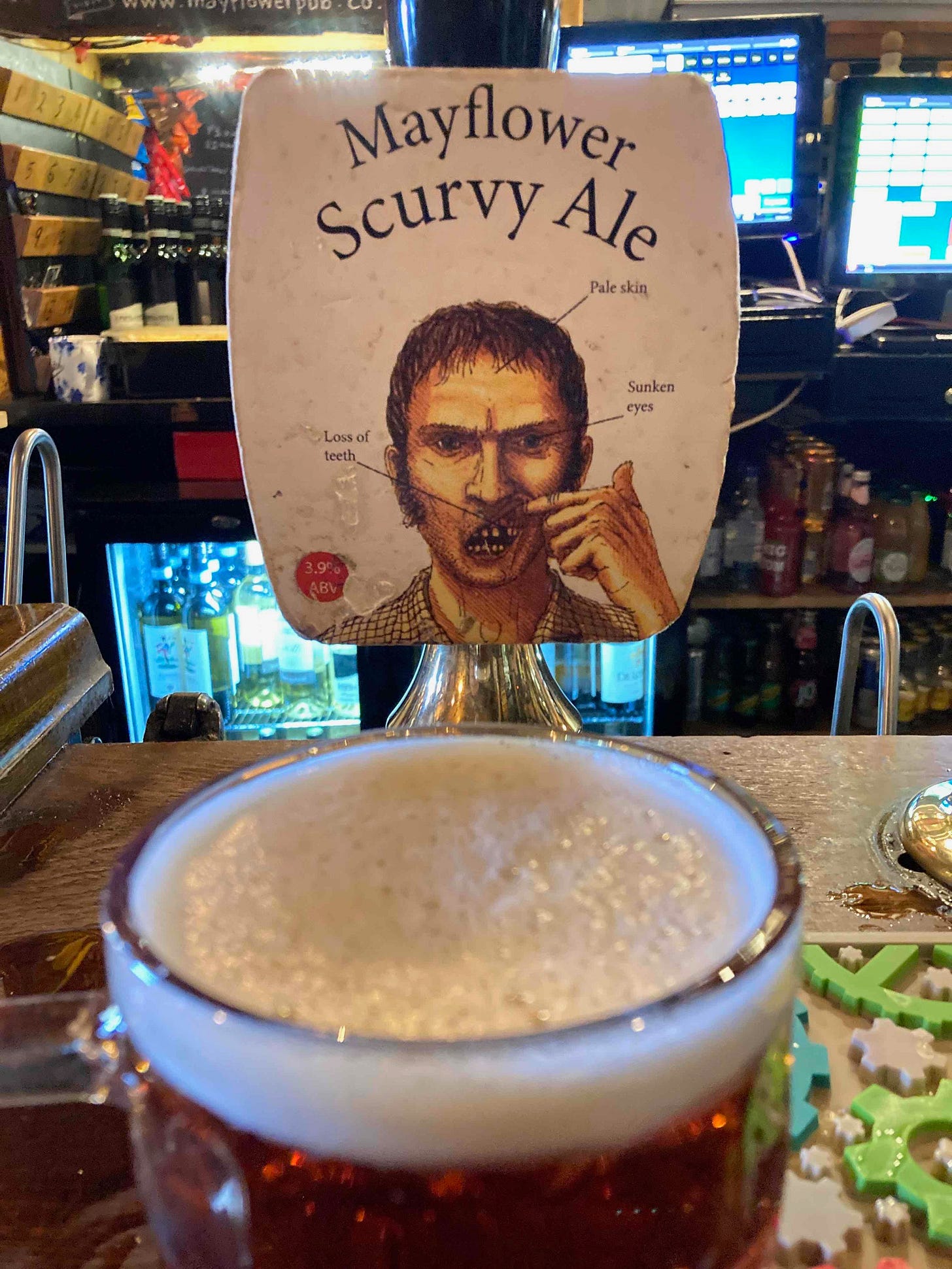
For more on mudlarking finds, see this from the Museum of London Docklands
To see more of Jenny's mudlarking adventures, follow her on Instagram @jennyridgewell1
Meditations on Beauty
Sitting in Gallery 30 of The National Gallery in London on a hot July day, meditating in the presence of the beautiful ‘Still Life with Lemons in a Wicker Basket' by Spanish painter Juan de Zurbarán is time well spent. A group of us, around 25 fellow art enthusiasts, gathered to listen and take part in a workshop with meditation and poetry tutor Emma Mills.
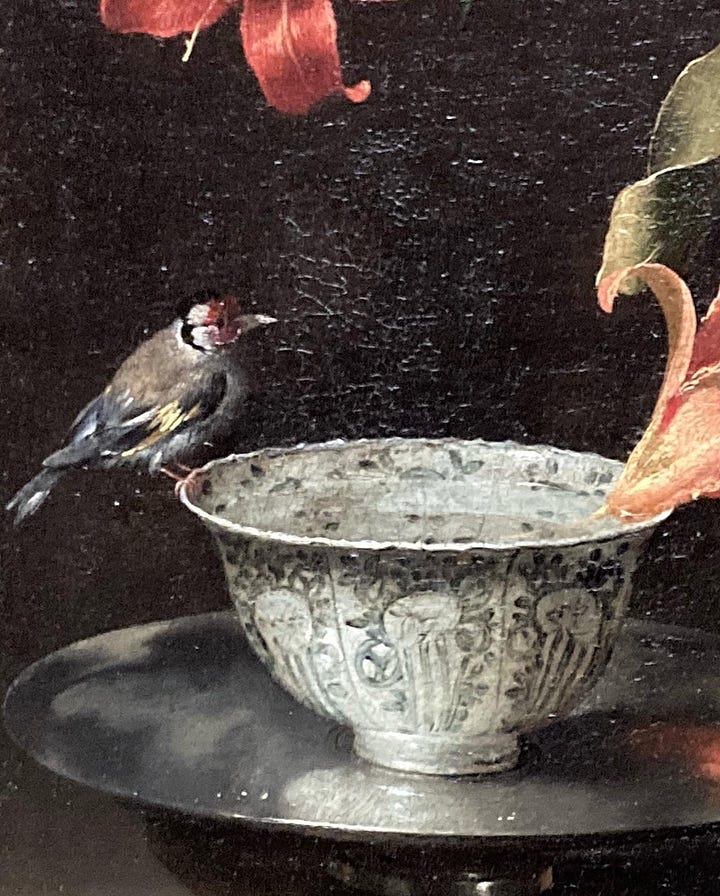
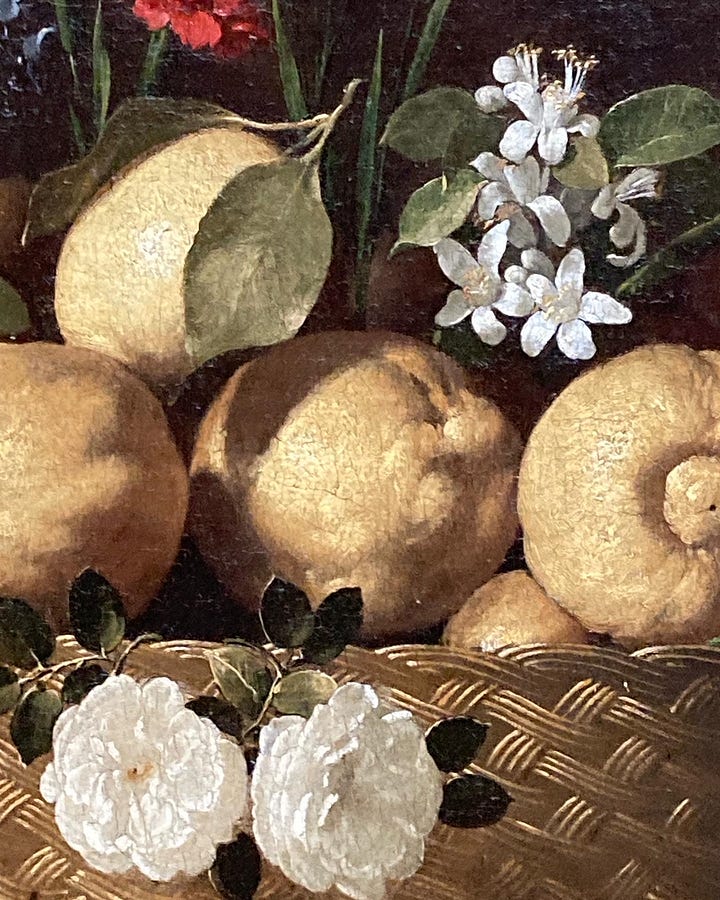
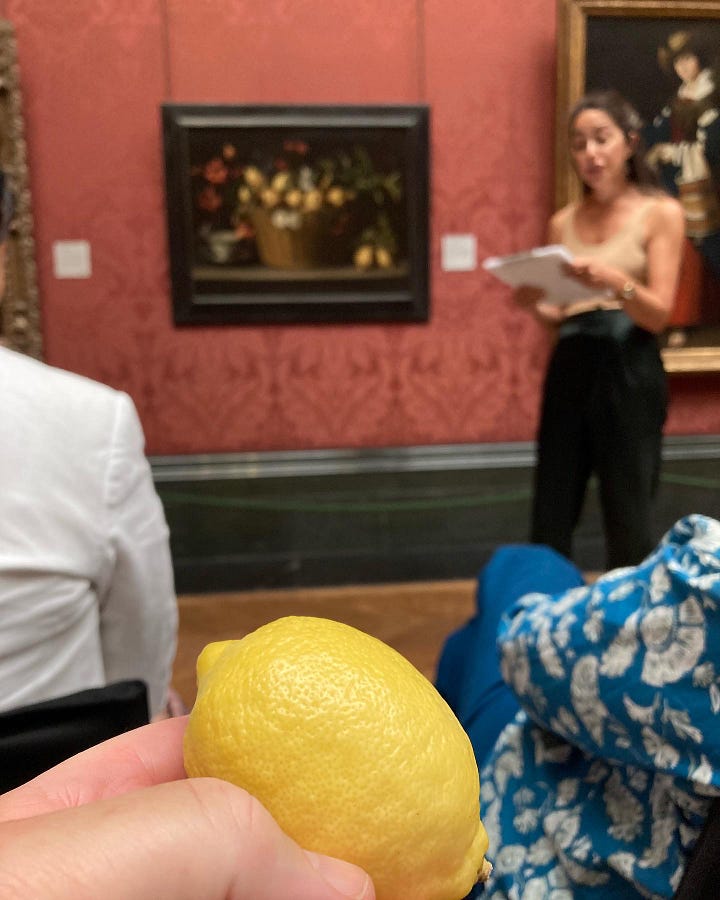
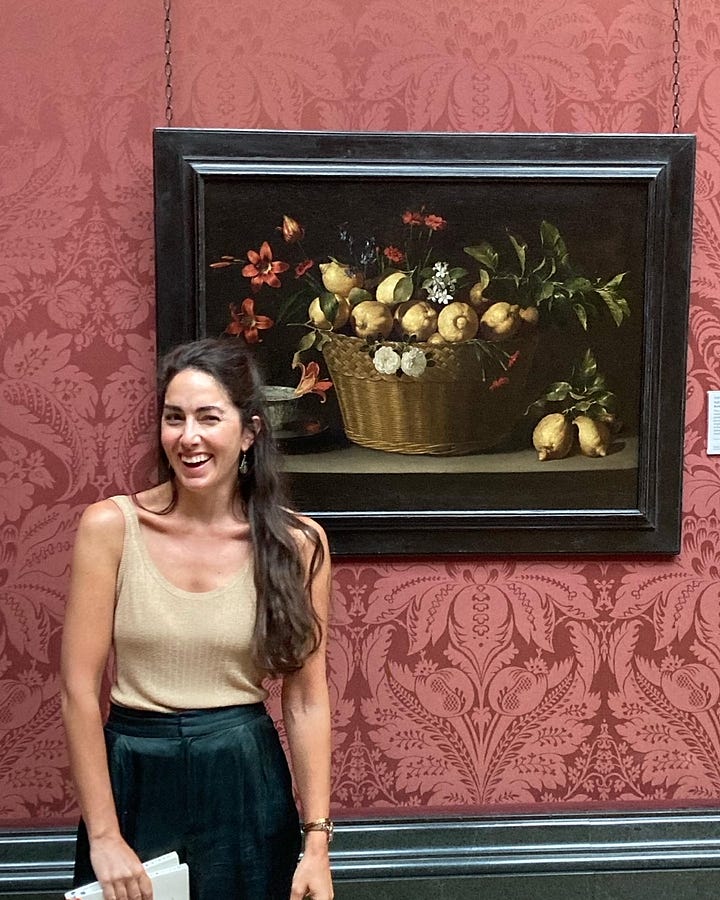
I was thrilled that Emma had chosen this painting for the workshop, full of bright lemons, apple blossoms, and a goldfinch - a Renaissance-era symbol of Christian redemption and the Passion of Jesus.
The theme of 'Meditations on the Beauty of Being' used this still life by de Zurbarán. It was painted in the late 1640s by a talented artist who died far too young aged 29. His life and artistry were taken by the plague.
We spent time meditating, discussing the painting with a reflective gaze rather than one of purely analytical and familiar to traditional art history thinking.
I'm teaching two classes of 'Creative Writing inspired by Art' over the next couple of weeks for Kent Adult Education and will use some of Emma's insights (see below).
Published by Rider, part of the Penguin Random House group, Emma's book is called 'Inhale, Exhale, Repeat. A meditation for every part of your day'.
So good to see art and life with new eyes and talk poetry of Rumi and Matsuo Bashō.
Subscribe to the National Gallery's newsletter to keep in touch with similar events and other meditations; such as these:
Monet’s Water Lilies: Why does this painting make some people cry?https://www.nationalgallery.org.uk/stories/why-does-this-painting-make-some-people-cry
Seurat's 'Bathers at Asnières
https://www.nationalgallery.org.uk/paintings/picture-of-the-month/picture-of-the-month-may-2022
A mindful look at the Ugly Duchess
https://www.nationalgallery.org.uk/paintings/picture-of-the-month/picture-of-the-month-may-2023
5 Minute Mediations
https://www.nationalgallery.org.uk/stories/5-minute-meditations
5 Minute Mediations: Constable’s ‘ The Cornfield’
https://www.nationalgallery.org.uk/stories/5-minute-meditation-constables-the-cornfield
RECIPE: Elderflower & Lemon Cordial
Here in England we’re approaching the tail-end of the elderflower season, as the hedgerows lose these blousy, creamy white flowers of the hedgerow as nature prepares for wild Autumn produce such as sloes and damsons. So, here’s a great recipe to make some refreshing cordial, that will keep for months in the fridge. Enjoy diluted with water, soda or a sparkling wine with a slice of lemon and plink of ice.
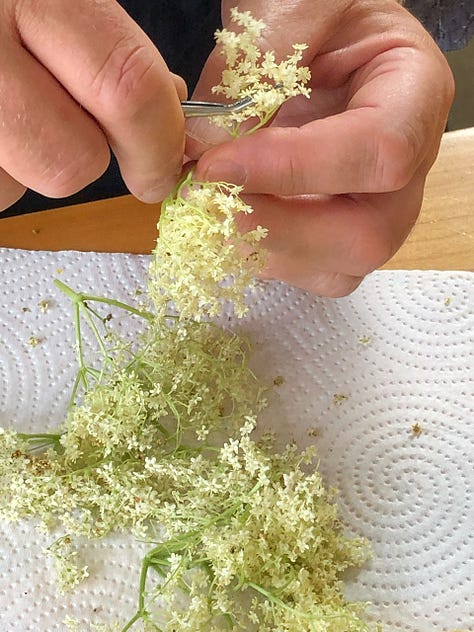
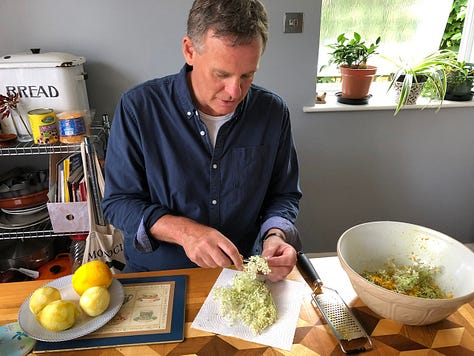
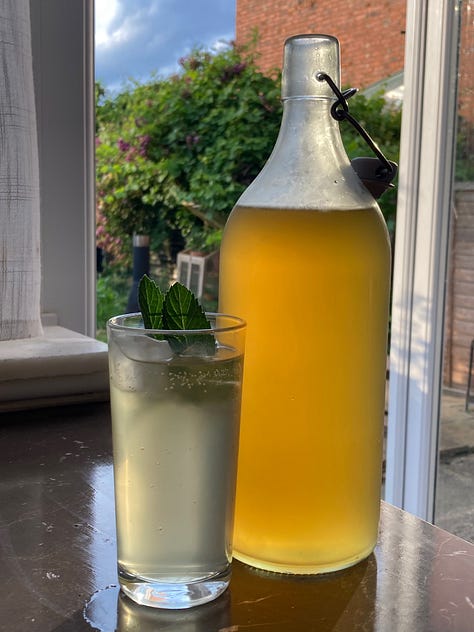
1 kg granulated sugar
1 litre boiling water
2 large, unwaxed lemons, juiced and zested
20 elderflower heads
Place sugar in clean bowl with the boiling water and stir to dissolve. Add the citric acid or lemon juice and the lemon zest.
Remove stalks and gently shake the elderflower heads to remove any bugs (or use tweezers as, I did, see photo)
Add the flowerheads to the sugar syrup. Make sure they are fully submerged.
Cover and leave to stand over night, stirring once or twice.
Strain the elderflower brew through sterilised muslin and decant into sterilised bottles for storage.
Bruce and The Lemon Grove's Events Diary
Hosting the Demonstration Stage at:
Tonbridge Farmers Market (every second Sunday of the month, 9.30 - 1.30)
Next market in Tonbridge, Kent is on Sunday July 9.
Aylesford Farmers Market (every third Sunday of the month, 9.30 - 1.30)
Next market in Aylesford, Kent is on Sunday July 16.
I'll be sharing recipe ideas using food from the farmers market and interviewing many great local growers and producers making wine, bread, jams, marmalade, and much more. Follow Tonbridge Farmers Market for updates.
CREATIVE WRITING INSPIRED BY ART
Tunbridge Wells, Kent. July 13 & 20. 10.30am - 12.30am.
I am teaching two classes about writing and art at The Amelia Scott centre in Tunbridge Wells, for Kent Adult Education. A few places are still open. Click this link for more information.
If you enjoyed this post, please click on the little ❤️ below ⬇️.
Bruce McMichael
Writer, Podcaster, Educator
Website: www.thelemongrove.net
Twitter: @lemonbites
Facebook: @lemongrovesocial
Instagram: @lemongrovepics
Disclosure: I am an affiliate of Bookshop.org




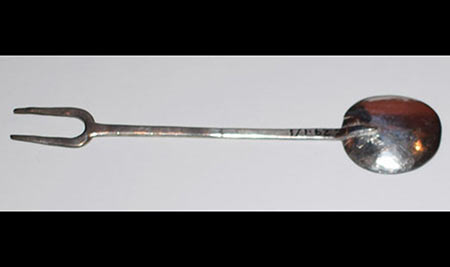

Just loved reading about the mudlarking. What larks! Jx